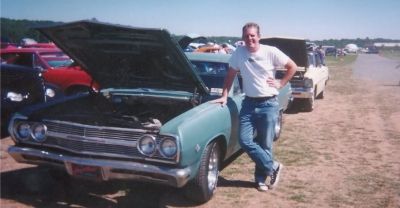 Re: Vacuum Advance and why to use it on the street
Re: Vacuum Advance and why to use it on the street
There really is a lot to seting upa a VA tune one an old engine with todays gas. Unfortunately, implying hooking it up and saying it doesn't work because isn't the real world things ran poorly isn't a very fair evaluation.
Sam, It seems like you tune is pretty safe. I would not be afraid of running that in the street. What is the reason you choose not to run a VA?
Keith, you are right about the factory tune and configs. They aren not ideal for performance and certainly were not intended for life today. Part of this thred could evolve in to how to tune and old engine for great performance and street manners with todays fuels.
One of the challenges can be that todays unleaded reformulated gasoline is that it is designed for use in a modern computer controlled electronic fuel injected engine with the goal of lowest possible exhaust emissions. The computer that operates with a modern fuel injected engine automatically adjusts the air/fuel mixture and the ignition spark timing in order to obtain the lowest possible exhaust emissions along with the best possible power and drivability.
The leaded gasoline that was sold at your corner gas station until the mid 1970’s was easier to tune for because a tuner could “read” the spark plugs and look at the tailpipe “color” to determine the air/fuel mixture. Today’s reformulated gasoline does not leave any “color” on the spark plug unless the air/mixture is very rich and the tail pipe color is almost meaningless. Most people think their engine is running too rich because the exhaust fumes burn their eyes; this is not true. An engine with a rich air/fuel mixture will have excessive carbon monoxide (CO) in the exhaust; carbon monoxide is an odorless gas that is quite deadly if you breathe too much of it. A engine that has a misfire from things such as: a rich air/fuel mixture, a lean air/fuel mixture or incorrect ignition spark timing will have a lot of unburned hydrocarbons (HC) in the exhaust. Exhaust gas with a high unburned hydrocarbon (HC) content will burn your eyes and make it difficult to breathe
Tracy, I say a lot is being left out, so let's fill in the spaces. If you can, help us oout and get your guy Pat to post here, or maybe try your best to post things he has written in context? Also, since you enjoy the car in heavy traffic, why did you choose to lock your distributor? One last question, what are your leakdown results and what is your threshold of "good" for a street driven motor wiht thousands of miles on it?
Eric, the way you wrote your, it almost sounded like you were talking about hooking the intake to ported vacuum, not manifold vacuum. I hope you don't take this the wrong way- more saying this for the sake of those reading. Ported Vac= emissions cars (with EGR) and Manifold Vac= muscle cars. There are some people who do not follow this but they appear to be trying to use a "custom tune" for help with stock type tire drag racing and probably shouldn't be mixed in here as that could be a great seperate thread.
Tom, I know everyone hates blanket statements, but 15 degrees VA is too much for todays fuels. We've done some great, non-stock tunes wich would pass for stock drivability that work great on todays fuels.
I'm not expert here either, and I've copied and pasted some things above from post my Dad has made and form the Henry Olsen. I have been setting up cars for about 20 years and there are still things I continue to learn from my Dad. Maybe someone else can shed some light on the how and why things are done in their tune for us all to benefit from. Looking forward to the technical discussion.
__________________
Paul III

|